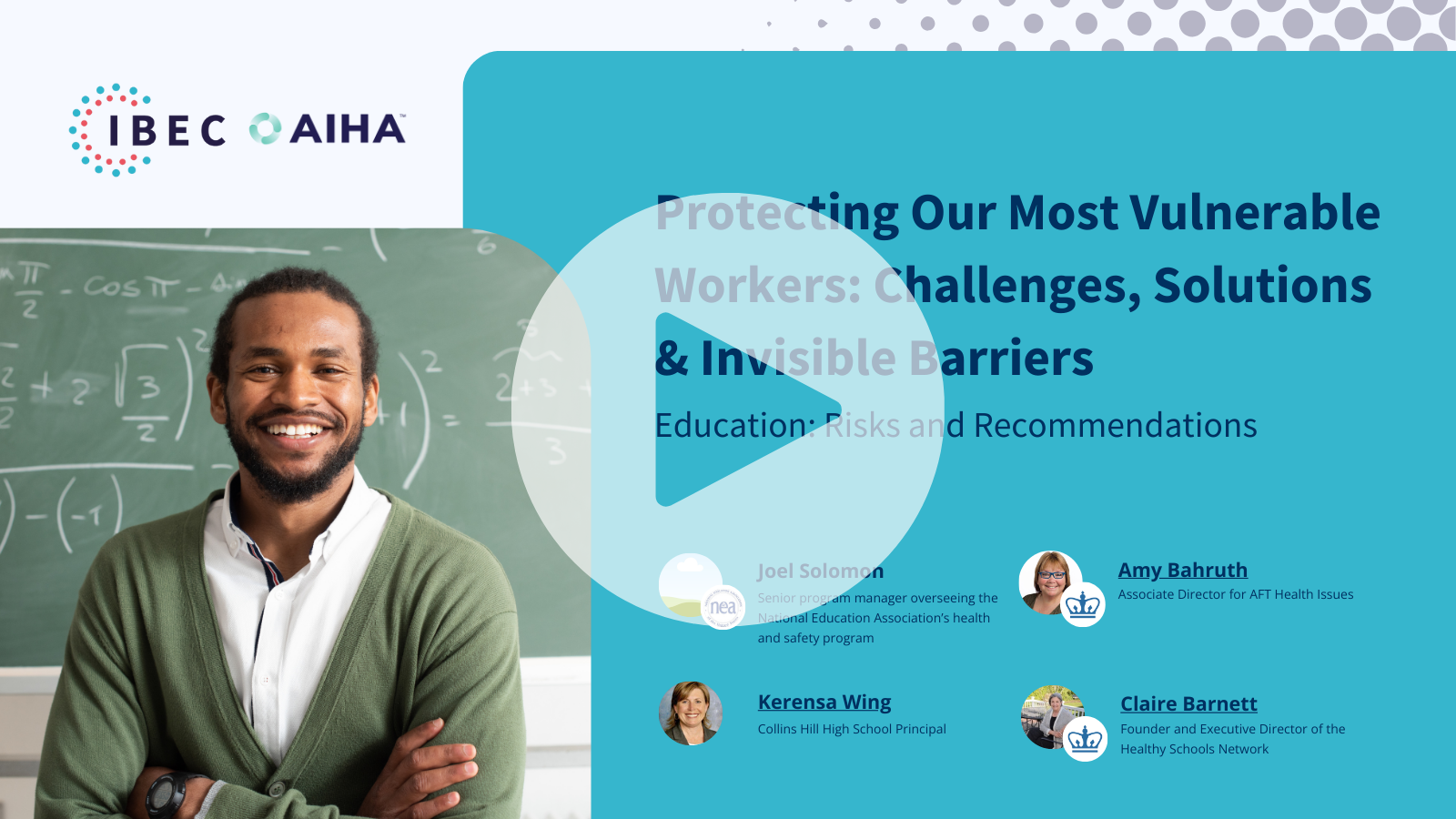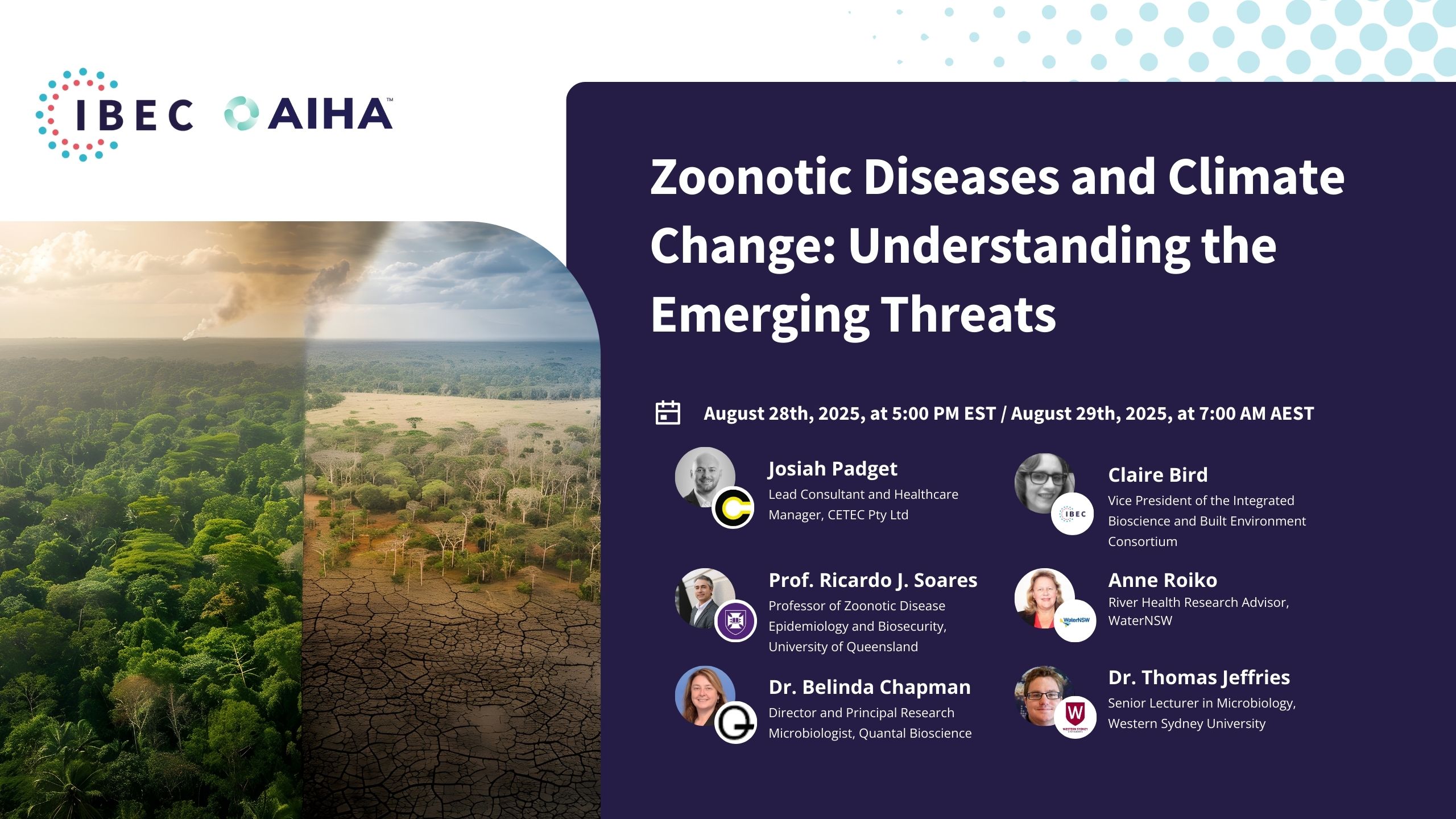Watch this session to learn about the needs regarding infectious diseases of one of our most vulnerable workforces: education
CLEAN Lessons Learned
Protecting Our Most Vulnerable Workers: Challenges, Solutions & Invisible Barriers
Education: Risks and Recommendations
This was the Education session of the CLEAN 2022 summit: Protecting Our Most Vulnerable Workers: Challenges, Solutions & Invisible Barriers with Moderators Alex LeBeau and Cynthia Eghbalnia and speakers Amy Bahruth, Claire Barnett, Kerensa Wing, and Joel Solomon.
In this panel discussion, experts delved deeply into the impact of infectious disease guidelines in educational settings. Central to their discourse was the emphasis on classroom ventilation requirements and the pressing need for practical standards. The shortcomings of past efforts were brought to light, especially given the heightened awareness of these needs amidst the pandemic. The experts’ consensus was that while efforts had been made, they were often piecemeal and lacked a cohesive strategy.
A significant portion of the dialogue centered on how COVID-19 affected schools. Panelists conveyed that the pandemic magnified existing gaps in health and safety protocols for educational institutions, emphasizing the need for robust infectious disease guidelines tailored to schools. Amidst the challenges, the role of proper classroom ventilation was underscored, given its potential to mitigate disease spread and foster healthier learning environments. The session ended with a collective call to action for policymakers and stakeholders: to acknowledge the lessons from COVID-19, prioritize the health of students and staff, and implement evidence-based guidelines to ensure safer school environments moving forward.
- Urgency of Guidelines: The pandemic highlighted the immediate need for robust infectious disease guidelines tailored specifically for educational institutions.
- Ventilation Imperative: Classroom ventilation requirements are not just about comfort; they are pivotal in mitigating the spread of airborne diseases in educational settings.
- COVID-19’s Educational Impact: Discussions revolved around how COVID-19 affected schools, emphasizing the immediate challenges and long-term implications of the pandemic on educational institutions.
- Holistic Approach Needed: Piecemeal solutions have proven ineffective. A comprehensive, cohesive strategy addressing infectious diseases is imperative for schools.
- Past Oversights: Historical gaps in health and safety protocols for educational institutions became glaringly obvious during the pandemic, necessitating thorough reviews and reforms.
- Collaboration is Key: The best outcomes arise from collaboration between educators, health professionals, policymakers, and other stakeholders.
- Empowering Educators: Providing science-based information empowers educational staff to make the best decisions, mitigating politicization and promoting factual discourse.
- Children at the Forefront: The pandemic’s toll on children is unprecedented, prompting a call to action to prioritize their health, safety, and overall well-being.
- Future-Proofing Schools: Planning and preemptive measures, rather than reactive ones, are vital for schools to handle future health challenges effectively.
- Financial Implications: Effective infectious disease guidelines and improved classroom ventilation come with costs, but the long-term benefits for student health and safety far outweigh the immediate expenses.
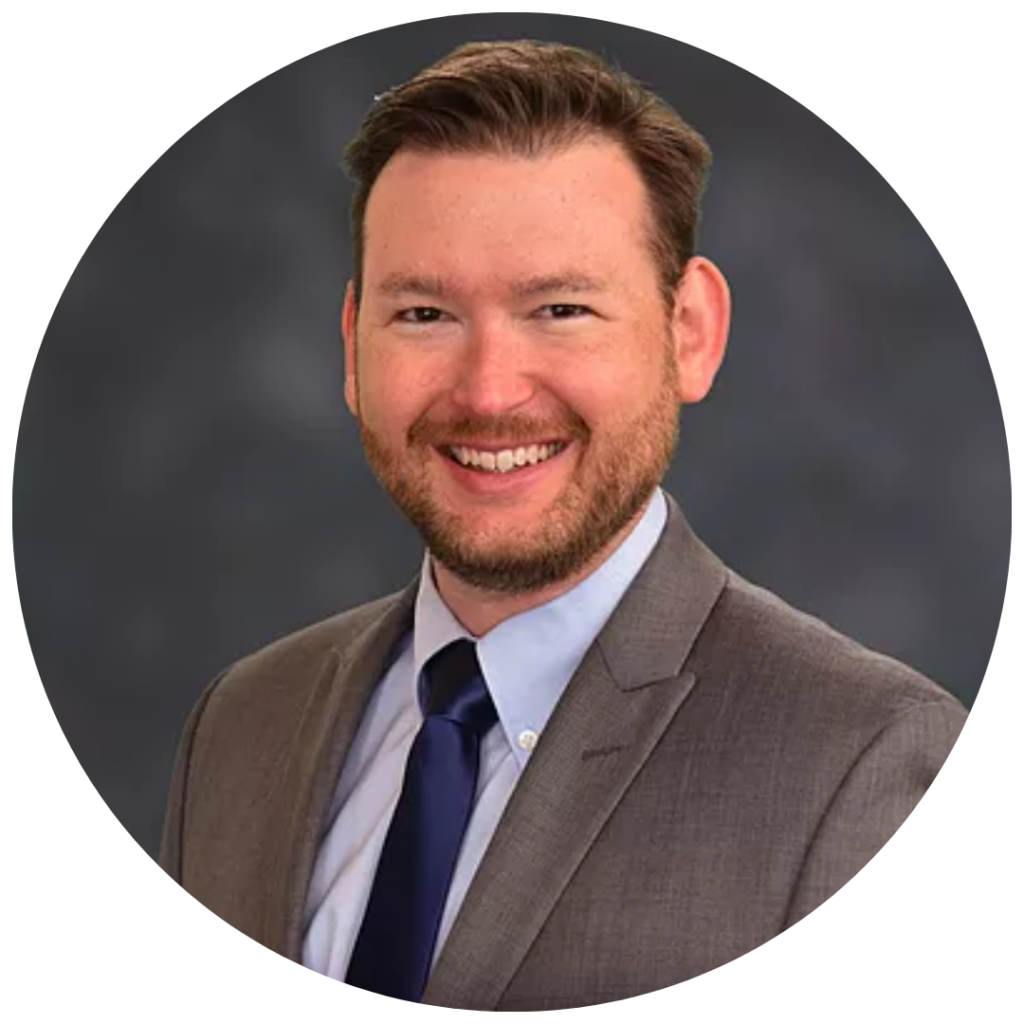
Alex LeBeau
Vice-chair for the AIHA Indoor Environmental Quality Committee
Alex LeBeau, Ph.D., MPH, CIH, currently serves as the vice chair for the AIHA Indoor Environmental Quality Committee. He is also the owner of Exposure Assessment Consulting, LLC, in Orlando, Florida, where he offers toxicology, industrial hygiene, risk assessment, and public health consulting services. Over his 14-year career, he has evaluated environmental and occupational exposures and has performed toxicological evaluations of chemicals and biological agents. He has performed indoor environmental quality assessments at healthcare, residential, and industrial facilities to evaluate exposure impacts on building occupants, including Legionella risk assessments.
Dr. LeBeau has presented on COVID-19 mitigation techniques for several different exposure scenarios. He has served as a subject matter expert and consulted on several occupational and environmental exposure claims. Finally, Dr. LeBeau has authored safety assessments on consumer products, including antimicrobial pesticide registration dossiers and Generally Recognized as Safe (GRAS) determinations for food ingredients following U.S. Food and Drug Administration (FDA) regulations for scientific procedures.

Cynthia Eghbalnia
Area Director of Safety for National Express, LLC for the Great Lakes Region
Cynthia Eghbalnia is a passionate Environmental, Health, and Safety professional committed to innovative and sustainable improvements in workplace culture that translates to quantitative and cost-effective results. Cynthia is a Certified Safety Professional (CSP) and a Certified Industrial Hygienist (CIH) with extensive experience in the safety, health, and environmental arenas. Her diverse background encompasses settings that include education (K12 and Higher Ed.), manufacturing, construction, and transportation sectors.
Cynthia’s professional experience includes working for an international environmental consulting firm as a staff industrial hygienist and environmental scientist, a technical college system holding the positions of District Environmental, Health Safety (EHS) and Security Manager, and Risk Manager, and for a large urban K12 school district as EHS and Worker’s Compensation Administrator. Currently, Cynthia is serving as the Area Director of Safety for National Express, LLC for the Great Lakes Region.
Joel Solomon
Senior program manager overseeing the National Education Association’s health and safety program
Joel Solomon is the senior program manager overseeing the National Education Association’s health and safety program. With 3 million members and 14,000 local associations, NEA is the country’s largest union. Solomon leads the Association’s cross-departmental Health and Safety Team, which, among other work, provides technical and strategic support to affiliates in both collective bargaining and non-bargaining contexts, develops and delivers health and safety training, and supports the work of health and safety committees.
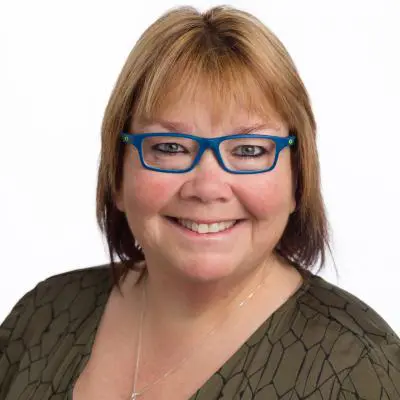
Amy Bahruth
Associate Director for AFT Health Issues
Amy Bahruth is the Associate Director for AFT Health Issues with an MS from Hunter College, CUNY, in Environmental and Occupational Health Sciences. She’s been working in the field of occupational safety and health for over 30 years and also teaches about occupational safety and health in the Labor Studies Program at Rutgers University. Her strong belief is that every worker has the right to go to work and come home each night to their families safe and sound and without suffering an occupational injury or developing an occupational illness. Her father, Eddie, died relatively young from liver cancer due to occupational exposure to solvents, which he was exposed to daily as a master mechanic and owner of his service station. He is one of so many who died unnecessarily from hazards faced on the job.
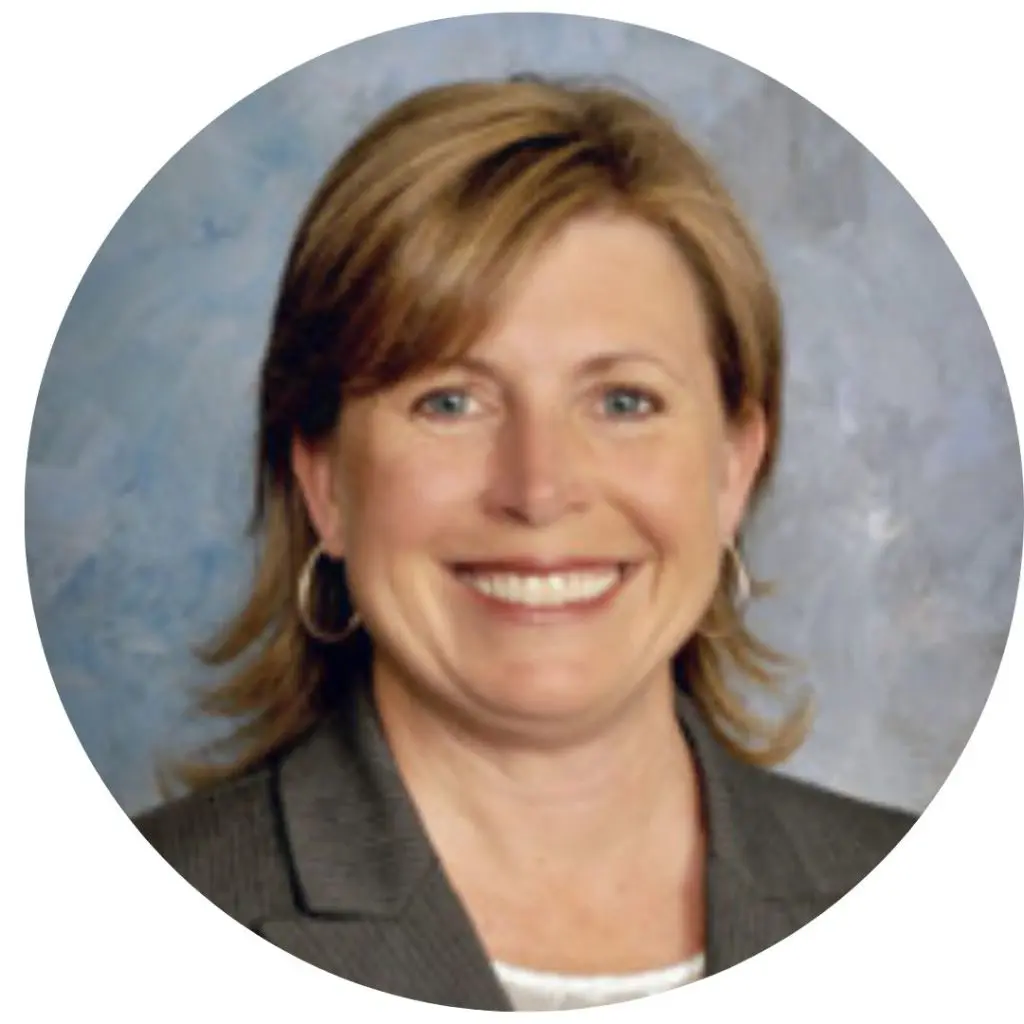
Kerensa Wing
Collins Hill High School Principal
Kerensa Wing believes that every student deserves a great teacher, which is why she embodies human capital management as well as strategic management to make a concerted effort to hire teachers who are content experts and student-focused in their approach. She believes the classroom teacher has an enormous impact on student growth and views her job of hiring, retaining, and training the best teachers as the most efficient path toward equity for students. She implemented a professional learning community structure among her team, incorporating scheduling changes to accommodate common planning and collaboration time using research-based practices for students. As a result, student performance on state assessments rose between 3 percent and 13 percent in proficient and distinguished levels on all tests.
Kerensa has also chartered 27-minute advisement periods, where students have a standing appointment with a teacher responsible for connecting with and advocating for every student in their group. The weekly advisement schedule includes time for reading, goal-setting, lessons, special interests, and more. Kerensa also gives herself time with students through an open-door policy and meets with students whenever they make a request.
Additionally, she harnesses the Building Ranks™ dimensions of innovation and promotes it within her school in both her staff and students. For example, a group of teachers approached her about starting a STEM program in 2014. She assisted them with training and planning time to create an innovative and academically integrated program that uses project-based learning to provide students with experiences where they can demonstrate their learning of our curriculum. In developing the program, the teachers and students worked together to develop a vision and mission for their learning. Wing provided resources and structures to encourage innovation and creativity. Now, students can complete Advanced Academic Pathways and Career Pathways in computer science, engineering, and video/film with either dual enrollment, a capstone project, or an internship in a STEM field during their senior year.

Claire Barnett
Founder and Executive Director of the Healthy Schools Network
Ms. Barnett is the founder and Executive Director of the Healthy Schools Network, a national 501c3 not-for-profit environmental health research, education, and advocacy organization organized in 1995, and the coordinator of the loosely held national Coalition for Healthier Schools, organized in 2001 to provide the national platform and forum for environmental health at school. In 2017, her work was honored with two national awards: the William K. Reilly Award from the American University School of Public Affairs for Environmental Leadership and the American Public Health Association’s David P. Rall Award for contributions to public health through science-based advocacy.
In 2017, the organization she leads received its second Award from US EPA for IAQ in 2007, a Green Apple Award from the Collaborative for High-Performance Schools for advancing Indoor Air in Schools. In 2014, she received a National Partner Award from Green Seal. In 2016, she was recognized by New Orleans’ Walter A Cohen Alumni Association for helping to save the historic African-American high school from demolition post-Katrina.
Alex LeBeau 00:00
We’re about to introduce our panelists and delve into their bios. First up, we have Kerensa Wing. Currently serving as the principal of Collins Hills High School in Suwanee, Georgia, she was honored as the Principal of the Year in 2019 by the Georgia Association of Secondary School Principals. Mrs. Wing began her journey with the Gwinnett County School District in 1990, teaching social studies at both Shiloh High School and Collins Hills High School. In 2002, she stepped into the role of assistant principal at Collins Hill, later becoming the first principal of Lanier High School in 2010. By February 2014, she resumed her position at Collins Hill High School. Her educational accolades include a bachelor’s degree in history and education from Oglethorpe University, a master’s degree in social studies from Georgia State University, and a specialist degree in Educational Leadership from Lincoln Memorial University. Additionally, in 2002, she was a finalist for the Gwinnett County Teacher of the Year. Kerensa, it’s a pleasure to have you with us.
Kerensa Wing 01:33
Thank you, Alex and Cynthia.
Alex LeBeau 01:36
Next, we welcome Joel Solomon. As the Senior Program Manager overseeing the National Education Association’s health and safety program, Mr. Solomon heads up a team serving the country’s largest union with 3 million members and 14,000 local associations. This team provides technical and strategic support, health and safety training, and assists health and safety committees. Joel, we’re delighted to have you here.
Cynthia Eghbalnia 02:16
While we wait for Joel, let me introduce our other esteemed panelists, Claire Barnett and Amy Bahruth. Claire Barnett is the founder and executive director of the Healthy Schools Network, an environmental health research, education, and advocacy group established in 1995. She also leads the National Coalition for Healthier Schools, set up in 2001, to foster discussions on environmental health in schools. Claire’s significant contributions have earned her national awards, such as the Williams K. Riley award and the American Public Health Association’s David Chirala award. Her organization also garnered accolades from the US EPA and the Collaborative for High Performance Schools. Claire’s work in preserving the historic African American high school post-Katrina in New Orleans is truly commendable. Claire, thank you for joining us.
Next, we have Amy Bahruth from the American Federation of Teachers. As the Associate Director for AFT health issues, she brings her expertise from her MS in Environmental and Occupational Health Sciences from Hunter College. With over 30 years in Occupational Safety and Health and teaching roles at Rucker University, Amy is a staunch advocate for workers’ rights. She believes that every worker should be protected from occupational hazards, a conviction deeply personal to her, stemming from her father’s untimely death due to occupational exposure. Amy, we are honored to have you with us.
To our listeners, this panel showcases a diverse range of expertise, organizational levels, and unique insights into the school system. I’ll now hand it back to Alex for further direction.
Alex LeBeau 06:19
Thank you, Cynthia, for those introductions. Amy, Claire, thank you both for joining us today. To clarify our agenda today: we aim to explore the issues and challenges faced by students, educators, staff, and community stakeholders during the pandemic. We’ll delve into developing science-based mitigation strategies, discuss how best to communicate risks to all involved parties, examine the challenges of integrating evolving science into educational decisions, and leverage our experiences to discuss lessons for future scenarios. Panelists, I’d like each of you to take a moment to describe your roles during the pandemic and offer your perspectives from the past few years, laying the groundwork for today’s discussion. Kerensa, seeing as you’re in your office, could you start by summarizing your experience over the past two years?
Kerensa Wing 07:22
Certainly. I was deemed an essential worker throughout the pandemic. I consistently came into the building every day, along with some key personnel like our head custodian and a few support staff. Our teachers and assistant principals initially worked from home, but we gradually reintroduced them to the building once safety precautions, such as distancing and mask-wearing guidelines, were established. In May 2020, we brought our teachers back in phases. Over the summer, we set guidelines for resuming sports activities. By fall 2020, students could opt for online or in-person learning. We implemented a self-screening process and mandated masks while amplifying our disinfection and sanitization efforts. Our educators taught both online and in-person simultaneously, adhering to a standard bell schedule. Currently, 98% of our student body is fully in-person, choosing either an all-online or all-in-person approach, and we still enforce mask-wearing and spacing as best we can.
Alex LeBeau 09:07
Thank you, Kerensa. Joel, could you share your experiences next?
Joel Solomon 09:13
Certainly. First, I want to express gratitude on behalf of the National Education Association for the opportunity to participate in this discussion. With 3 million members and 14,000 local affiliates across urban and rural settings, offering guidance and support presents challenges. Balancing factors like the state of school infrastructures, and the presence (or lack) of collective bargaining compounds the complexity. We focused on technical support, navigating school functions, facilitating health and safety committees, and acknowledging the significant contributions of everyone from cafeteria staff to teachers throughout this period. It’s been a demanding journey, and I’m eager to delve deeper into our conversation.
Alex LeBeau 11:19
Thank you, Joel. Claire, could you provide a brief summary next?
Claire Barnett 11:26
Of course, and thank you for having me. It’s an honor to be here. We partnered early with the AFT, especially with Darrell Alexander, in our endeavors for children’s environmental health. Established in 1995, our nonprofit sought to echo the New York State Board of Regents’ emphasis on the importance of safe and healthy schools. Addressing this issue isn’t straightforward. We emphasize that children are unique in their physiological responses to environments; schools aren’t merely office spaces, with most being denser than nursing homes; about 96% of public school attendees are women and children; and a significant number have pre-existing health conditions. Therefore, providing clean air, water, and facilities is crucial. Our initiatives have included parent guides, fact sheets, and more. When the pandemic began, and the CDC issued guidance, I noticed inconsistencies, particularly regarding disinfectants. The miscommunication was evident, and it’s a topic I look forward to exploring today. Thank you.
Alex LeBeau 14:29
I greatly appreciate that. And Amy, your thoughts on this?
Amy Bahruth 14:33
Thank you for the acknowledgement. I agree with the sentiments shared by everyone. I’m grateful for the opportunity for AFT to be involved. For the audience’s clarity, while AFT might seem solely for teachers, we represent five divisions in AFT. Our primary group is K-12, comprising both teachers and professionals. We also advocate for paraprofessionals, like Joel mentioned, who took on roles such as food delivery, meal preparation, and building maintenance – our invaluable custodial, food service, and bus workers. In addition, we represent faculty and support staff in higher education. Perhaps most surprising to some, we’re the second-largest RN union in the U.S., boasting around 200,000 members. Given the diverse roles we cater to, the past two years have kept us on our toes.
From the pandemic’s onset, we recognized there wouldn’t be a single solution to keep us safe. Various strategies would be essential, be it in schools, higher institutions, or healthcare. A successful plan demanded genuine stakeholder engagement, primarily our members. Their involvement ensured an ongoing dialogue and an iterative approach to planning, adjusting to new research, technological advancements, and emerging evidence. At the national level, our focus was to guide our leaders and members through the complex terrain of technological and health guidelines. Simplifying the CDC guidance, which can be intricate, was imperative. We aimed to offer best practices gleaned through experience. Our goal has always been to champion our members and ensure they have a voice at decision-making tables, an endeavor we’ve achieved in numerous instances.
Alex LeBeau 17:13
Thank you, Amy. To our attendees and fellow panelists, this will be a panel discussion. We’ll pose questions, directing them to specific panelists, and encourage open discourse. As Cynthia moderates, we hope for a dynamic conversation based on personal experiences. Turning our attention back to the early days of 2020, Joel, when challenges first surfaced, what guidance or recommendations did you provide to your members, especially concerning re-entry into buildings? Did you suggest any screening methods or tools?
Joel Solomon 18:05
Indeed, discerning between genuinely effective measures and mere “hygiene theater” was challenging, given the gaps in our understanding back then. To address your query, we weren’t enthusiastic about temperature checks. Relying on them seemed flawed due to issues like asymptomatic transmission. Our focus was broader: how to manage student and staff entry, transportation logistics, and building access. The solutions differ based on whether the setting is urban or suburban. Thus, we emphasized a tailored approach, guiding members through various considerations to find what best suited their circumstances.
Alex LeBeau 19:55
Thanks for that insight, Joel. I noticed both Amy and Claire nodding. I’d love to hear your perspectives as well.
Claire Barnett 20:06
In February, as we grasped the unfolding scenario, we were poised for the 19th annual National Healthy Schools Day in April 2020, supported by around 60 national partners. We aimed to pivot swiftly, integrating COVID insights from the CDC and EPA’s indoor air quality guidelines. We urged schools to capitalize on the unexpected “gift of time” due to closures to enhance ventilation and refine cleaning and disinfecting protocols, even considering transportation logistics. The endeavor evolved into a report, co-authored with organizations like the American Public Health Association and Asthma and Allergy Foundation, titled “The Pandemic vs. Schools”. We advocated for comprehensive infection prevention and control plans, comparable to all-hazards emergency management plans. Today, our concern persists that schools often react rather than proactively prepare. Despite the majority being equipped for active shooter scenarios, responses to COVID have been inconsistent. This disparity is most pronounced in resource-starved communities.
Alex LeBeau 22:09
Thank you. Amy, can you talk about getting people back into the building after everything initially happened?
Amy Bahruth 22:15
Absolutely. I must emphasize what Joel mentioned: every school district, and indeed every building within a district, is unique. Thus, a one-size-fits-all approach doesn’t work for things like hallway direction planning. We provided broad recommendations and encouraged individual schools to customize them. A significant suggestion was for our leaders to establish connections with public health officials and collaborate with local health departments. They can assist in devising infection prevention policies, systems to identify sick students and staff, and areas to isolate these individuals until they can be safely removed from the premises. We promoted the idea of a reporting or symptom checker system. But, truth be told, even before the pandemic, it was challenging to prevent sick students from coming to school. And as Joel noted, temperature checks aren’t foolproof since they can’t detect asymptomatic individuals. Empowering our leaders to seek guidance from health departments and bring suggestions to management was crucial. Lastly, I’d be remiss if I didn’t mention our public employees division; they are dear to me.
Alex LeBeau 24:12
Kerensa, you’re at the forefront, dealing with these issues daily. Could you share your perspective on the guidance you’ve received, what the district mandates versus your implementations, and how you’ve felt empowered to ensure everyone’s safety?
Kerensa Wing 24:35
Certainly. Our district provided clear guidelines on layering mitigation factors. For example, we disinfected high-touch surfaces with chemicals approved by the Healthy Schools Network. Every classroom has hand sanitizer, and we’ve maintained a mask mandate throughout. Last year, with about 45% of students opting for in-person learning, we spaced them at least six feet apart. However, this year, due to increased student numbers, spacing isn’t feasible. But, we still uphold the mask mandate. We also engage in contact tracing and have designated areas for ill students awaiting pickup. Our focus has always been on applying the provided guidelines effectively to ensure the safety of all.
Alex LeBeau 26:09
I’d like to ask all of you: Have your screening procedures evolved over time? Joel, you discussed asymptomatic spread and temperature checks. Has your approach or recommendations changed based on the current science?
Joel Solomon 27:03
It’s a layered strategy. Screening is just one aspect. What’s essential is how it fits into a broader set of mitigation strategies. Over time, self-check questions and electronic reporting systems have improved. Yet, screening hasn’t been a standalone focus.
Amy Bahruth 28:23
I frequently align with Joel’s views. From the pandemic’s onset, we advocated for a layered mitigation approach. Initially, I used a puzzle analogy to convey that all pieces (strategies) are necessary for completeness. However, as we learned, not all strategies carry equal weight. For instance, ventilation and filtration take precedence over surface cleaning since COVID doesn’t spread predominantly via surfaces. Thus, while screening is essential, other measures like vaccination, boosters, testing, and ventilation are higher on the priority list.
Claire Barnett 29:55
My sense is that some of the confusion from the CDC’s guidance and communications has caused people to focus on various mitigations at different times, adding to the confusion. I believe that the CDC should take a closer look at the actual profile of American public schools. Approximately 40% of the students are children of color from low-income communities that were severely impacted. Before the pandemic, half of these students relied on free or reduced-price lunches, and this number has since grown. With many students having pre-existing chronic conditions and schools being overcrowded and in poor conditions, the CDC’s reports on the weekly status of COVID in schools did not accurately represent most American schools. This discrepancy placed many schools in a challenging position. While I don’t believe the guidance was meant to be problematic, if schools cannot adhere to the guidelines while being pressured to remain open, it creates unnecessary difficulties. I feel that the CDC’s communication could be more in tune with the actual operations of schools.
For instance, in the spring of 2021, the US Green Building Council Center for Green Schools, in collaboration with ASHRAE, surveyed some schools about their implementation of CDC’s indoor air guidance. A recurring response was that their schools were not designed for such measures. This shows the importance of understanding the infrastructure and capabilities of the entities being advised. This gap in understanding has not been completely bridged, and as a result, school boards, principals, nurses, and teachers are under undue criticism. I urge those from the CDC and AIHA listening in to engage more deeply with the actual conditions of America’s schools. Even the EPA, which participated in many discussions, felt sidelined. The messaging is still a concern, and there’s room for improvement in public communication.
Cynthia Eghbalnia 33:22
I didn’t mean to interrupt. I just want to assure our attendees that we’ll address their questions soon. Perhaps we can delve into a safety protocol discussion next?
Alex LeBeau 33:37
Indeed. Amy touched on it and Claire hinted at the same. In industrial hygiene, we rely on the hierarchy of control for mitigation strategies. I believe discussing safety protocols in this context would be beneficial. Cynthia, could you lead that?
Cynthia Eghbalnia 34:01
Certainly. Focusing on safety protocols, there are several consistent ones: staying home when ill, monitoring symptoms, wearing masks, washing hands, etc. Given our discussion and incoming questions, what lessons have we learned from these safety protocols? What has worked, and what hasn’t?
Kerensa Wing 34:50
Effective communication is crucial, especially when aiming to change human behavior. Our primary challenge, yet also a significant success, has been in altering behaviors. Most of my students comply because they want to protect their families and attend school. We’ve made considerable progress, emphasizing the importance of in-person schooling for students’ social and emotional well-being.
Cynthia Eghbalnia 35:45
Amy, your insights on this, particularly about control preferences and protocols?
Amy Bahruth 36:06
One of our primary challenges revolves around ventilation and filtration. Our K-12 schools, especially those in poorer communities, faced infrastructural issues even before the pandemic. Instead of addressing these underlying issues, many schools opted for quick fixes, often falling prey to companies selling ineffective solutions. This is concerning. Over half of our schools have inadequate ventilation systems. We need to prioritize the allocation of federal funds to address this critical issue.
Claire Barnett 38:03
To add to Amy’s point, a US GAO survey published in 2020 found that 41% of schools needed improved heating, ventilation, and air conditioning systems. Another 23% required new roofs. Furthermore, an EdWeek survey in 2021 indicated that schools were increasingly concerned about indoor air and ventilation. Despite this, there is currently no dedicated funding for school infrastructure in key legislative acts. This disparity between the needs and the available resources is alarming.
Joel Solomon 39:27
Can I share a few thoughts on your question? Thanks for allowing me to speak. Early on, initiatives like the EFT and the Healthy Schools Network spoke about the hierarchy of controls. However, this terminology wasn’t integrated into the CDC’s broader guidance until later. This integration was significant. One crucial aspect that’s been highlighted is the importance of labor management engagement, whether through collective bargaining or otherwise. What we’ve gleaned is the importance of providing information to our local representatives in a digestible manner. Instead of emphasizing specifics like needing “six air changes per hour,” it’s more beneficial to point them to authoritative sources discussing the significance of proper ventilation. This way, they can approach their school districts with a clear understanding and ask informed questions. Our early focus was on ventilation and cleaning and disinfection. The goal wasn’t to dictate procedures but to equip local representatives with the tools to discuss and implement effective strategies with their schools and districts.
Cynthia Eghbalnia 41:32
Amy, I believe you shared an EFT ventilation document. Could you discuss this briefly for our audience? It seems to align with what many institutions are practicing, offering them guidance.
Amy Bahruth 42:02
Let me ensure I’m not muted. I’d love to take credit, but the credit goes to UC Davis Western Cooling Efficiency Center and the Energy and Efficiency Institute. They collaborated with Lawrence Berkeley Labs. Their research in California has been pivotal in understanding the relationship between air quality, ventilation in schools, and its impact on student learning. They’ve produced two insightful videos: one explaining ventilation and another focusing on COVID-specific recommendations. I highly recommend their resources, and I’ll share a link in the chat.
Cynthia Eghbalnia 43:21
Thank you, Amy. Alex, would you like to proceed with another question, or should we pivot to audience queries?
Alex LeBeau 43:31
I’d like to incorporate some audience questions. One pressing concern is how guidance from global organizations like the CDC and WHO has been interpreted by the education sector. Beyond the CDC, are there other guidance documents that the education sector has found useful?
Kerensa Wing 44:05
Our district has been consistently in touch with the CDC through their weekly briefings with health departments. Much of our guidance stemmed from there. On the infrastructure front, I’m uncertain about the depth of engagement with those guidelines. Still, I do know there was an effort to enhance the quality of filters in our HVAC systems and to improve air exchange rates. However, many of our school’s windows don’t open, and we lack outdoor classroom spaces. These are ongoing challenges.
Claire Barnett 45:11
Our focus has primarily been on EPA guidelines about indoor air quality in schools. Not all schools possess mechanical air handling systems; many rely on natural ventilation through windows. We’ve also consulted resources from ASHRAE and Harvard’s School of Public Health. Joe Allen, in particular, has done commendable work in creating user-friendly content that simplifies complex topics about classroom air circulation.
Amy Bahruth 46:37
To add, beyond the conventional bodies, an unexpected yet valuable collaborator for us has been the sheet metal workers. They have experts certified in assessing ventilation systems, providing recommendations for improvement. Their insight has been invaluable, especially as they approach the task with a genuine interest in indoor air quality.
Alex LeBeau 47:56
Thank you all for the insights. Claire touched on this earlier, but I’d like to delve into the efficiency of infection control measures for schools. Whether it’s at the district or school level, what are your recommendations or experiences with such plans, especially in the districts you’ve engaged with?
Claire Barnett 48:26
Infection prevention and control plans have been on our radar since the Ebola outbreak around 2014-15. When a case arose in New York City, we examined public health advisories that centered on children and schools. Interestingly, the CDC’s advisory on Ebola emphasized protecting house pets but overlooked children. This discrepancy led us to delve deeper. Despite the New York State Health Department’s assurances about the existence of infection control plans and medical directors under the title “Medical Director” in New York law, we discovered no such provisions. The Center for School Health simply termed them as such. This realization emphasized the need for actual medical directors and authentic infection control plans. This idea became even more pertinent during the COVID outbreak. In collaboration with the New Jersey Work Environment Council and the New Jersey Education Association, as well as other groups, we devised a comprehensive plan on infection prevention and control. The essence is to develop a systematic approach, integrating cleaner air, water, and facilities. Having preventive measures in place is paramount instead of hastily assembling them post-crisis. A parallel strategy to the all-hazard emergency management plans, directed by institutions like the EPA, CDC, and the Education Department, would be a significant initiative. Schools have lagged in addressing indoor air concerns for decades, and a policy push is necessary. This is equally vital in the face of persistent climate disasters. We need robust plans to protect children in the numerous communities across the nation.
Alex LeBeau 51:58
Kerensa, based on these discussions, have there been any local district implementations or plans?
Kerensa Wing 52:10
In our district, we maintain a regular schedule for updating roofs and HVAC systems, and we consider the latest guidance during these updates. My school had its HVAC system replaced just before the pandemic. As other schools in our feeder system underwent upgrades, I observed that the guidance was updated accordingly.
Alex LeBeau 52:39
Thanks for sharing, Kerensa. Cynthia, over to you.
Cynthia Eghbalnia 52:43
Thank you all for your contributions. I’d like to invite each panelist to share any quick lessons learned or address any pressing topic we might have missed. Let’s start with Joel. We have about five minutes, so a brief contribution from each would be appreciated.
Joel Solomon 53:08
I believe collaboration between labor and management is paramount. The frontline staff in schools – from teachers to custodians – are the ones deeply familiar with the on-ground situation. For example, when the CDC Foundation sought insights into school mitigation strategies, we advised them to engage with custodial and maintenance staff. Ensuring collaboration at every level and fostering communication and engagement, both at the state and local levels, is crucial for better outcomes. Furthermore, comprehensive planning for the future that encompasses indoor air quality, cleaning, disinfection, and infection control is vital. Relying on in-school experts is also key.
Cynthia Eghbalnia 54:49
Thank you, Joel. Amy, any insights from your end?
Amy Bahruth 54:57
In addition to what Joel highlighted, I think dispelling misconceptions has been a significant focus for us. For instance, promoting basic cleaning with soap and water over excessive disinfection, and questioning the efficacy of plexiglass barriers. Educating people to overcome such misconceptions and advocating for genuine protections is vital. I echo Joel’s sentiment: member and leader engagement is crucial.
Cynthia Eghbalnia 56:13
Thank you, Amy. Kerensa, any quick takeaways?
Kerensa Wing 56:25
I concur with both Joel and Amy: collaboration is essential. We need to share science-based information, ensuring informed decision-making at all levels. It’s vital to foster relationships where open dialogues can occur without political bias.
Cynthia Eghbalnia 56:49
Thanks, Kerensa. Claire, your final thoughts?
Claire Barnett 56:54
This pandemic has been catastrophic for children. UNICEF recently stated that it’s been the most significant disaster for children in its 75-year history. We need to prioritize children and focus on proactive prevention. Adequate funding is vital for this.
Cynthia Eghbalnia 57:36
Those insights are profound. Alex, how should we proceed?
Alex LeBeau 57:43
I want to extend my gratitude to all our panelists for their insights today. Your contributions have been invaluable. Thank you for your time and effort.
Watch the other sessions of the 6-part NAS CLEAN Lessons Learned series
Gig Economy Workers Discussion Panel: Knowledge Dissemination and Application
Go to this sessionKeynote Presentation: Higher Risk Occupations and COVID-19
Go to this sessionFirst Responder Discussion Panel: Risks, Training, PPE and Decontamination
Go to this sessionAgriculture and Construction
Go to this sessionSponsor Spotlight
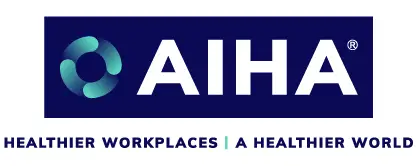
American Industrial Hygiene Association (AIHA)
AIHA is the association for scientists and professionals committed to preserving and ensuring occupational and environmental health and safety (OEHS) in the workplace and community. Founded in 1939, we support our members with our expertise, networks, comprehensive education programs, and other products and services that help them maintain the highest professional and competency standards. More than half of AIHA’s nearly 8,500 members are Certified Industrial Hygienists, and many hold other professional designations. AIHA serves as a resource for those employed across the public and private sectors and the communities in which they work.
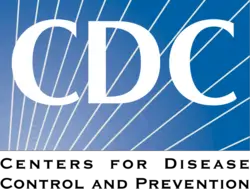
Centers for Disease Control and Prevention
CDC is the nation’s leading science-based, data-driven service organization that protects the public’s health. For over 70 years, they’ve put science into action to help children stay healthy so they can grow and learn, to help families, businesses, and communities fight disease and stay strong, and to protect the public’s health.
Have a question about the event?
Connect with IBEC experts directly! Drop your queries below, and let's further the dialogue on preventing the spread of infectious diseases.

